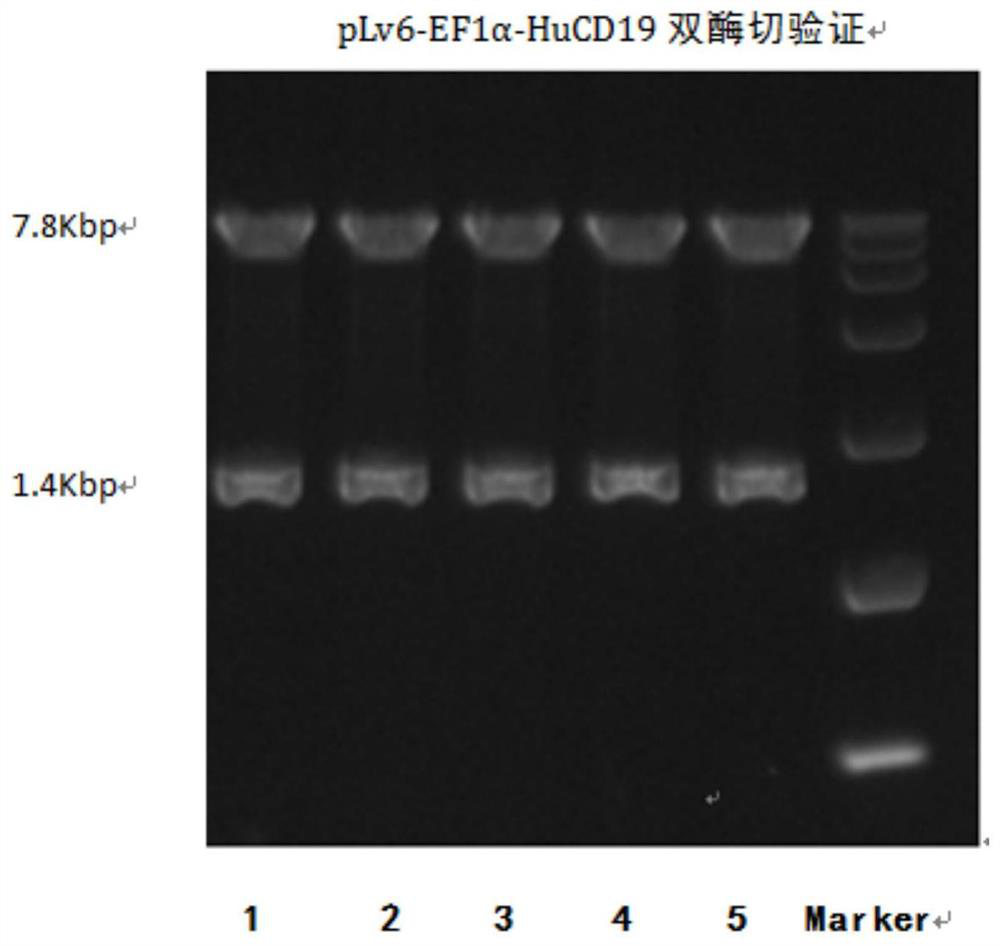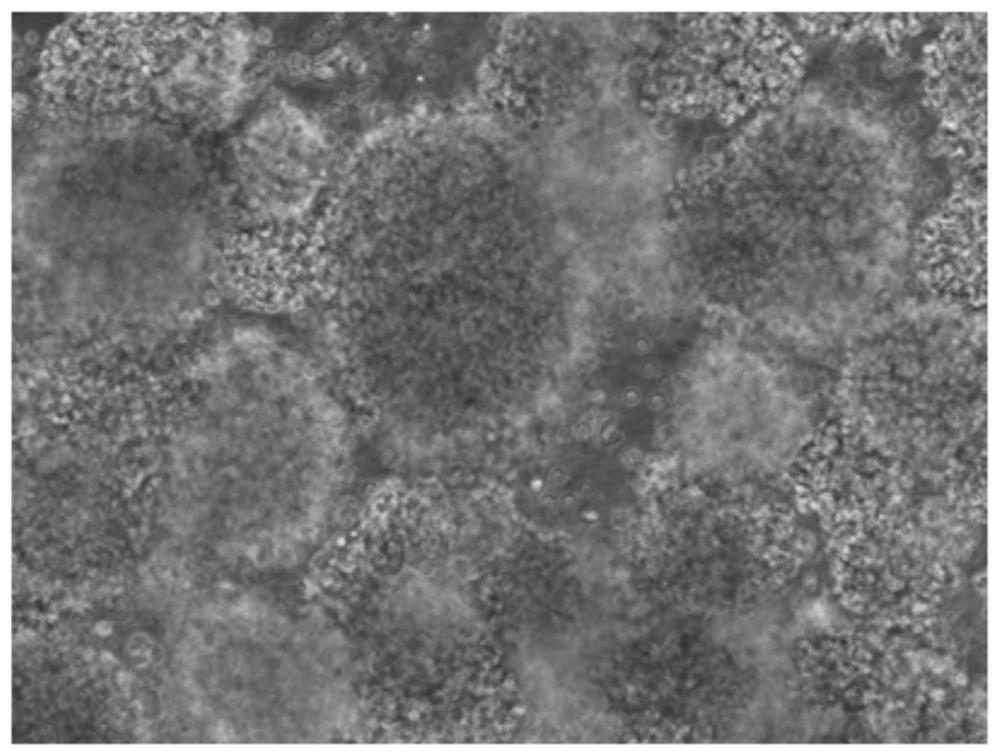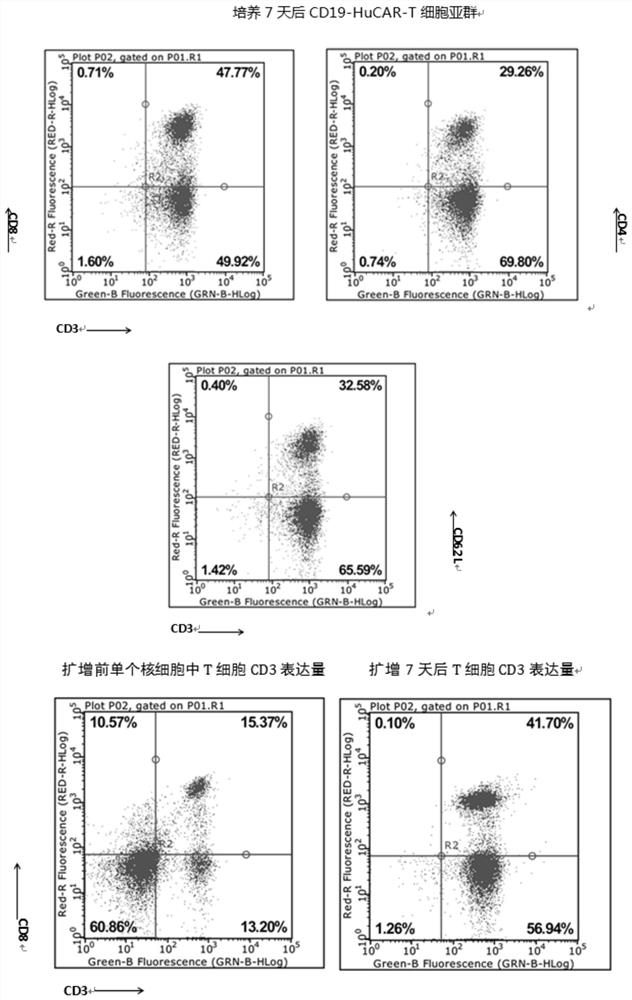Preparation and application of CD19-targeting humanized chimeric antigen receptor
A chimeric antigen receptor and humanization technology, applied in the biological field, can solve the problems of antibody affinity and specificity reduction
- Summary
- Abstract
- Description
- Claims
- Application Information
AI Technical Summary
Problems solved by technology
Method used
Image
Examples
Embodiment 1
[0134] Example 1: Preparation of humanized chimeric antigen receptor lentiviral vector targeting CD19 antigen
[0135] (1) Targeting CD19 humanized chimeric antigen receptor gene consists of CD19 single-chain antibody scFv, CD8α hinge region, CD8α transmembrane region, CD28 intracellular co-stimulatory signal domain, CD3ζ intracellular primary signal domain, the full length is 1428bp ;
[0136] (2) Synthesize the CD19 humanized chimeric antigen receptor gene fragment (hereinafter referred to as "fragment") by artificial gene, add BamH1 enzyme cleavage site to the 5' end of the fragment, and add Sal1 enzyme to the 3' end of the fragment Cutting site: The empty lentiviral expression plasmid pLenti6 / V5-p53_R273H was double-digested with BamH1 and Sal1, and the restriction system was as follows:
[0137] pLenti6 / V5-p53_R273H 4 μg,
[0138] BamH1 1μl,
[0139] Sal1 1μl,
[0140] 10×buffer 5μl,
[0141] wxya 2 O supplemented to 50 μl;
[0142] (3) Perform agarose gel electr...
Embodiment 2
[0145] Example 2: Packaging of pLv6-EF1α-HuCD19 lentivirus
[0146] (1) Culture Lenti-293T (hereinafter referred to as 293T) to a fusion degree of 70% to 80% for transfection;
[0147] (2), pMD2.G, pΔR 8.91 (pMD2.G and pΔR 8.91 are biological wind products, used to provide the protein particles required by the virus coat) and pLv6-EF1α-HuCD19 prepared in Example 1 according to the mass ratio of each plasmid pMD2.G: pΔR8.91: pLv6-EF1α-HuCD19 prepared in Example 1 = 1:3:4, mixed together to obtain 40 μg of co-transfection plasmid;
[0148] (3) Take two 15ml centrifuge tubes and mark tube 1 and tube 2 respectively. Add the co-transfection plasmid of the above 1 to tube 1 and supplement serum-free DMEM to 1.5ml. Add 1mg / mL PEI aqueous solution (PEI is sigma Product No. GF70215825) 120μl and add serum-free DMEM to 1.5ml, mix thoroughly and vortex tube 1, and at the same time add PEI in tube 2 to tube 1 drop by drop; get plasmid-PEI mixture, mix plasmid-PEI Let the solution stand ...
Embodiment 3
[0150] Example 3: Isolation, infection and expansion of T cells
[0151] (1) Put 100ml of healthy adult peripheral blood containing sodium citrate anticoagulant into a 250ml centrifuge cup, centrifuge at 1500rpm, 20°C for 15min, and collect the upper plasma;
[0152] (2) Add an equal volume of normal saline to the lower blood cell layer and mix thoroughly; add 20ml of Ficoll-Hypaque lymphocyte separation medium (density 1.077, Tianjin Haoyang) into a 50ml centrifuge tube, and then put an equal volume of blood cell suspension along the tube wall Slowly add to the upper layer of the lymphocyte separation medium, be careful not to break the separation liquid level; then centrifuge the centrifuge tube at 2000rpm for 20min, and adjust the speed of the centrifuge to 0;
[0153] (3) Discard the supernatant layer of the cell suspension after centrifugation, and carefully absorb the middle buffy coat layer, which is the peripheral blood mononuclear cell layer. Trypan blue staining is...
PUM
 Login to View More
Login to View More Abstract
Description
Claims
Application Information
 Login to View More
Login to View More - R&D
- Intellectual Property
- Life Sciences
- Materials
- Tech Scout
- Unparalleled Data Quality
- Higher Quality Content
- 60% Fewer Hallucinations
Browse by: Latest US Patents, China's latest patents, Technical Efficacy Thesaurus, Application Domain, Technology Topic, Popular Technical Reports.
© 2025 PatSnap. All rights reserved.Legal|Privacy policy|Modern Slavery Act Transparency Statement|Sitemap|About US| Contact US: help@patsnap.com



